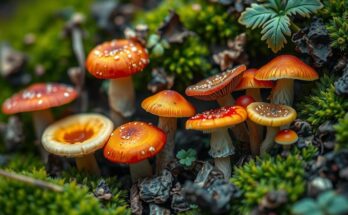Residents around Lake Titicaca, particularly Indigenous communities, are grappling with the impacts of climate change and pollution. They are reporting dwindling water levels and a decline in biodiversity. Community leaders are actively organizing cleanup efforts and advocating for sustainable practices, while scientists warn of severe ecological consequences. Integrated regional action is crucial to address these challenges effectively and ensure the preservation of local livelihoods and cultural heritage.
At Lake Titicaca, the residents, particularly Indigenous communities, are increasingly affected by climate change and pollution. Gonzalo Pusari, a leader from the Yumani village, reflects on how the predictable nature cycles have been disrupted, impacting their ancient trust and way of life. Titicaca, the highest navigable lake in the world, is vital for over three million people, supporting their livelihoods since the Inca Empire and earlier civilizations. Yet, its waters are dwindling due to climate crises and pollution, threatening not only its ecosystem but also the cultural heritage of the communities surrounding it.
Pusari, residing on Isla del Sol, plays a pivotal role in community waste management and strives for sustainable water usage amid a lack of centralized services. He emphasizes the commitment to protecting their legacy despite the challenges. Scientists identify specific pollution sources from industrial activities and unregulated mining that contaminate the lake’s tributaries, highlighting critical ecological challenges that contribute to declining water levels and biodiversity.
Marco Limachi, a water resources researcher, indicates that climate change leads to shorter rainy seasons and higher temperatures, causing microalgae blooms that endanger native fish species. The water’s diminishing quality is exacerbated by reduced rainfall, soil degradation, and changing land use practices. Coordinated actions between Bolivia and Peru are urgently required to address these concerns effectively, including investments in water regulation and sustainable land practices.
The phenomenon of eutrophication is rapidly increasing, especially since the 1990s due to untreated wastewater discharge, significantly altering the lake’s ecosystem. Xavier Lazzaro from the Autonomous Binational Authority of Lake Titicaca notes the detrimental impact of heavy urban sewage from El Alto on local water quality. Although troubling, innovative proposals have emerged, leveraging nature-based solutions like the totora plant for pollution filtration and constructing treatment wetlands.
In response to the lake’s crises, local activists are mobilizing. Rosa Jalja leads an organization committed to environmental stewardship, fostering community practices to clean the shores and educate about sustainability. Her efforts extend beyond local initiatives, aiming to influence broader cultural behaviors towards water conservation and care. The continuity of these efforts reinforces a sense of responsibility for future generations, embedded within the community’s culture.
Activist Rita Suaña, representing the Uro people, highlights significant transformations in their interactions with Lake Titicaca. The altered landscape and dwindling resources challenge their lifestyle and traditions. Suaña, dedicated to preserving her culture, actively engages in maintaining traditional practices while confronting modern threats such as sewage pollution. She advocates for community-led initiatives to combat environmental degradation and emphasizes the importance of ancestral practices alongside contemporary scientific approaches.
Despite the adversities, the Uro people remain steadfast in their connection to Lake Titicaca and assert their right to exist alongside it. Facing political and environmental challenges, their identity and resilience drive their actions in seeking justice and demanding necessary support to sustain their livelihoods. This sacred body of water not only holds cultural significance but also embodies the struggles and aspirations of the communities that depend on it.
The pressing situations at Lake Titicaca illustrate the multifaceted challenges faced by Indigenous communities due to climate change and pollution. From the testimonies of community leaders like Gonzalo Pusari and Rosa Jalja, it is evident that the local population is proactively engaging in conservation efforts while recognizing the need for collaborative strategies for sustainable management. With the combined impact of pollution and climate-induced changes threatening their way of life, advocacy for environmental justice and recognition of indigenous rights emerge as essential components in preserving Lake Titicaca for future generations.
Original Source: www.preventionweb.net




